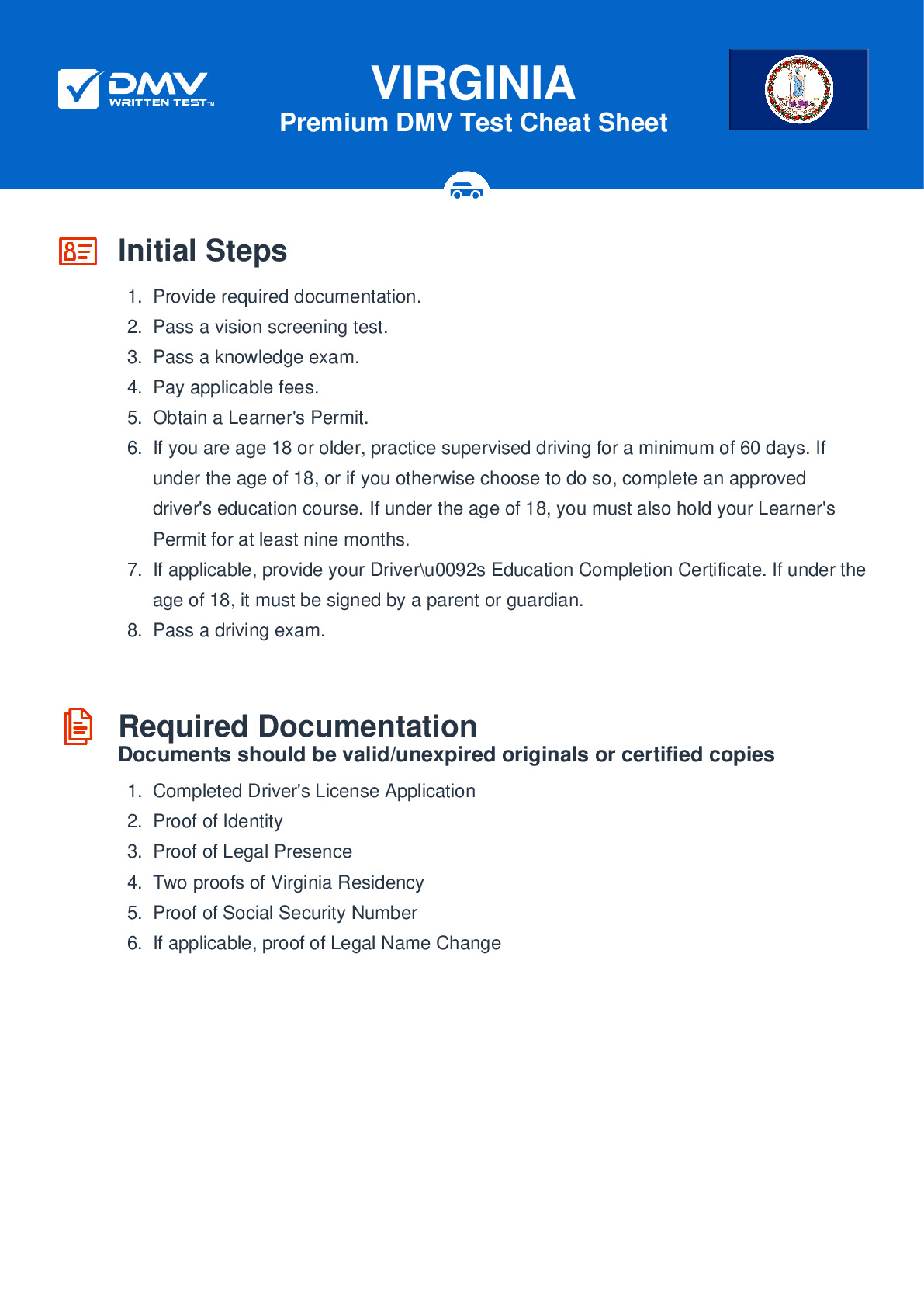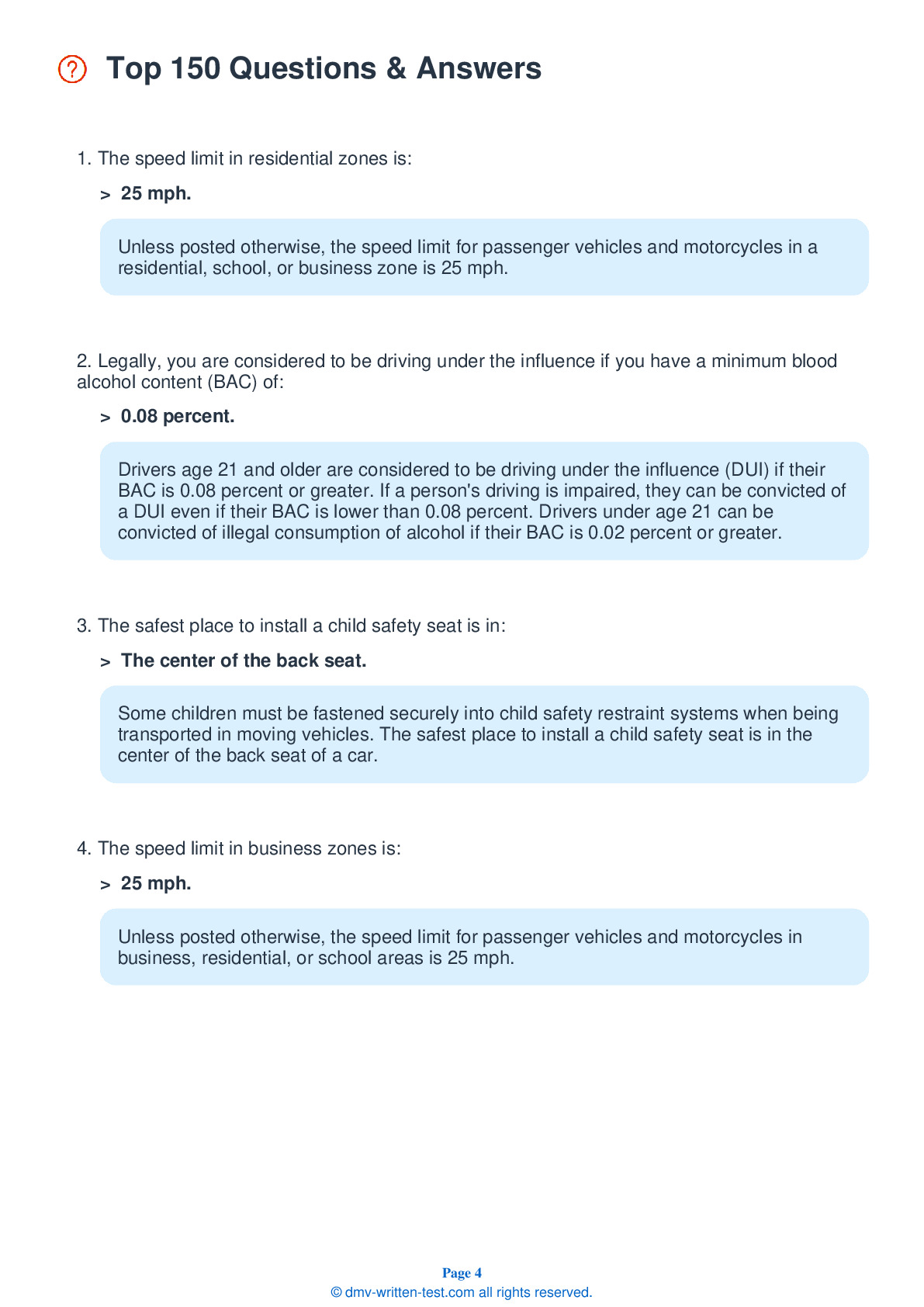2025 Virginia Permit Test 22
The following questions are from real DMV written tests. These are some of the actual permit questions you will face in Virginia. Each permit practice test question has three answer choices. Select one answer for each question and select "grade this section." You can find this button at the bottom of the drivers license quiz. For a complete list of questions and answers for Virginia please visit https://cheat-sheets.dmv-written-test.com/en/virginia/car.
Number of Tests
Number of Question
Passing Score
17. To avoid being in a truck or bus driver’s blind spot, you should:
Explanation
Because a large vehicle, such as a truck or bus, has large blind spots to its sides and rear, avoid driving alongside such a vehicle and do not tailgate one.
18. The “No zone” is:
Explanation
A truck or bus has blind spots on each side, in the rear, and in the front. An automobile cannot be seen in these blind spots. These blind spots are referred to as the “No zone.”
19. Roads become very slippery:
Explanation
Pavement can become very slippery within the first 10 to 15 minutes of a rainstorm because the rain causes oil in the asphalt to rise to the surface of the road. This problem becomes even worse in hot weather. The heat combined with the water causes more oil to rise to the road surface.
20. It is illegal to use a radar detector in Virginia.
Explanation
It is illegal to use a radar detector in Virginia.
21. When getting ready to change lanes, you should:
Explanation
Before changing lanes, check your side and rearview mirrors for traffic approaching you from behind. Just before you begin moving into the other lane, quickly glance over your shoulder and check for any vehicles that may be in your blind spot.
22. Emergency vehicles:
Explanation




